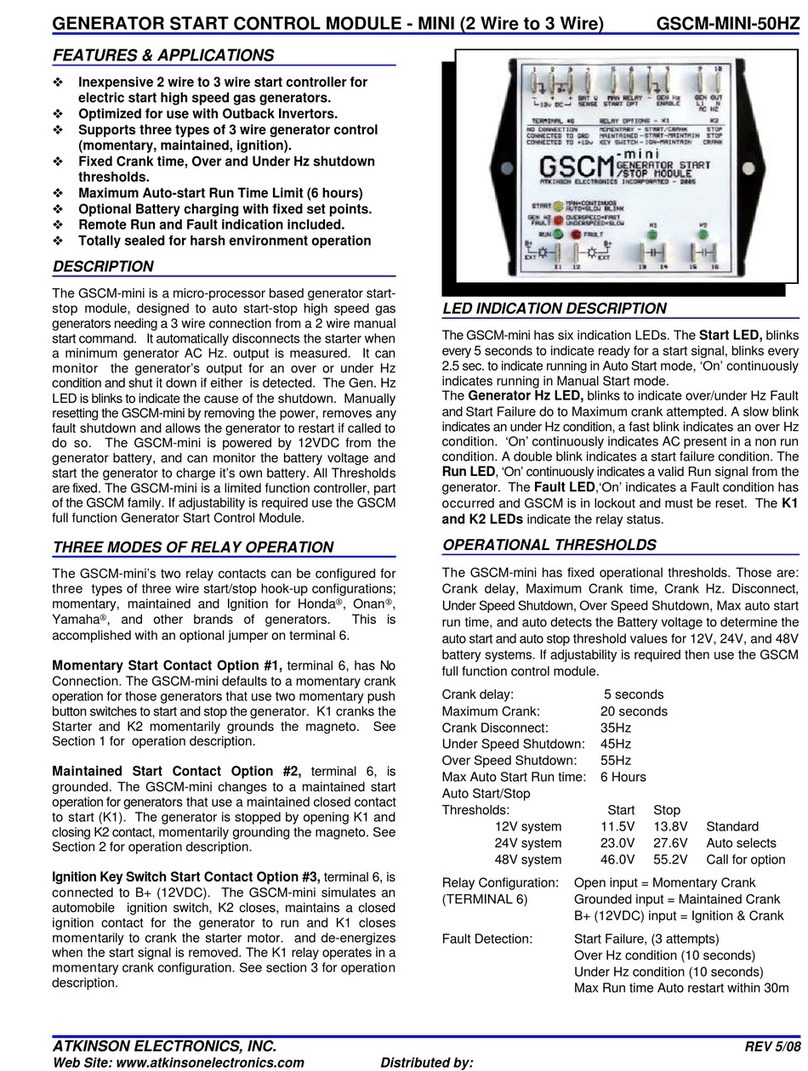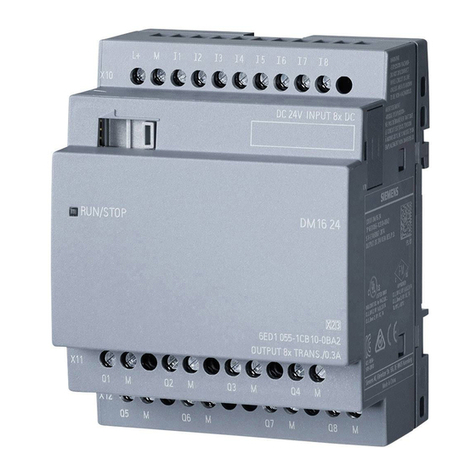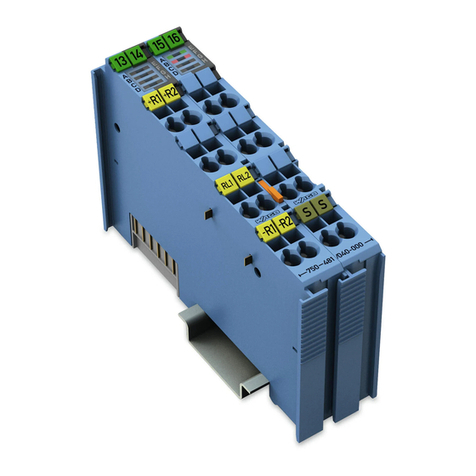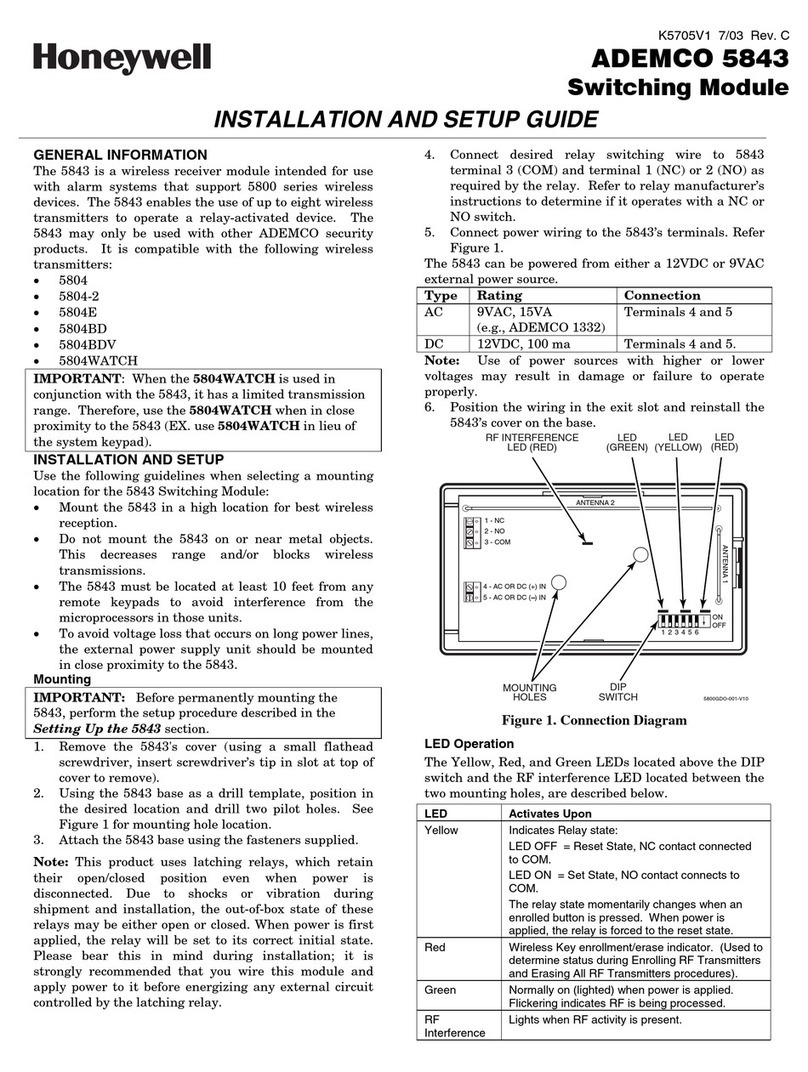BONETTI BBT-L Operating instructions

1
FOREWORD
To have proper working of Cesare Bonetti S.p.A. products,
any installation, start up, control and maintenance must be
performed by qualified and duly instructed personnel,
following prescription stated by maintenance manual.
To minimize any risk for people, goods and environment,
those general instruction must be respected.
Cesare Bonetti S.p.A. is not responsible for damages
outcoming from:
- use of product by non qualified personnel;
- incorrect installation;
- incorrect maintenance;
- product alteration or tampering;
- use of spares not original by Bonetti;
- non-performance of instruction stated in maintenance
manual;
- extraordinary occurrence.
Any responsibility regarding correct selection of product and
its proper material, depending on technical characteristic,
application and purchasing standards and rules, belong to
the system or plant engineer.
PRESSURE
Before starting maintenance operation be sure that pres-
sure inside product is reduced to atmospheric value and be
sure that product connection piping has been correctly
isolated.
Do not trust on the Pressure Gage only to assume that
pressure has been discharged.
TEMPERATURE
To avoid burning, wait until product temperature cools down
completely, and use protecting gloves, eye glasses and
dressing, if necessary.
DISPOSAL
Product can be recycled. No environment pollution risk
occurs if proper procedure has been respected.
Warning: if product contains residue of process fluid,
disposal and/or recycling prescribed procedures for such
fluid must be respected.
In case PTFE sealing or gaskets is fitted on product, such
material must be recycled separately, according to proper
and/or prescribed procedures.
DANGEROUS GAS OR FLUID INSIDE PIPING
Be sure that any dangerous or flammable or explosive gas
or fluid has been discharged from product and connected
piping, to avoid any danger to maintenance people due to
contact or inhalation
ENVIRONMENT DANGER
Evaluate carefully: explosion risk, oxygen leakages, danger-
ous gas leakages, fire risk due to maintenance operation or
welding.
SEALING GASKETS
Graphite sealing gaskets to be removed or handled during
maintenance, as spares, could contain thin steel layers able
to injure, if non handled with care.
MAINTENANCE WORK
Maintenance work must be performed or supervised by
qualified, duly instructed and skilled people. Personnel in
charge of products maintenance, installation or exercise
must be trained to carry out procedures according to use
and maintenance manual.
Verify that tools to be used for maintenance are within their
scope and that they are in good condition.
If special tools are requested, verify their availability and
condition.
STORAGE
If products that are non self-draining are stored in low
temperature, be careful to avoid or protect them from inside
fluid freezing.
Good condition of stored products must be periodically veri-
fied.
PRODUCTS SENT BACK TO BONETTI COMPANY
According to laws and rules for safety, health and environ-
ment preservation, if any product is sent back to Cesare
Bonetti S.p.A. for maintenance or any other reason, the
sender must inform by written notice about risk and warning
to be used depending on product mechanical damages, or
inside and/or outside product fluid residue and/or contami-
nation, that could be dangerous for health, safety or envi-
ronment.
Such information must be completed with any useful safety
instruction and safety data sheet regarding substances clas-
sified as dangerous or potentially dangerous.
I-20024 GARBAGNATE MILANESE (iTALY)
Tel.: +390299072.1 - Telefax: +39029952483
Internet: http://www.cesare-bonetti.it
e-mail: [email protected]
UUSSEE
&&
MMAAIINNTTEENNAANNCCEE
MMAANNUUAALL
OOFF
BBOONNEETTTTII®VVAALLVVEESS
TTYYPPEE
BBBBTT-LL
-
BBEELLLLOOWWSS
SSEEAALLEEDD
-
CCAASSTT
IIRROONN
SAFETY GENERAL INFORMATION
PED 97/23/EC
Art. 3.3 & Cat. 1
Pubblicazione B 02 - 06 - Eng - Rev. 0
This manual is exclusive property Cesare Bonetti S.p.A.,
under Copyright and any not authorized reproduction, in
part or in total, shall be prosecuted.
Shown products are according the current production.
Cesare Bonetti S.p.A. reserves to modify product
characteristics according technical evolution or customer
special request.
Verify if manual comply with used product.

1.0 SCOPE
This manual states safety criteria, check and controls, installation
instruction, use and maintenance instruction for BONETTI®Bellows
sealed valves type BBT-L valves, in cast iron material, manufac-
tured by Cesare Bonetti S.p.A.
2.0 PRODUCT DESCRIPTION
The BONETTI BBT-L bellows sealed valve is a device useful to
intercept a fluid, liquid or gas.
Standard materials normally used for pressure containing part are
Cast Iron GG-25 and Nodular Iron GGG-40.3.
If those materials are not suitable for the fluid, please note that
Cesare Bonetti S.p.A. can provide same type of valves in forged or
cast steel or in special materials according to Customer specifica-
tion.
3.0 RATING
Max rating condition (pressure and temperature) and group fluid
classification is stated by 97/23/CE Directive (PED), annex II, and
are shown in following Table 1.
WARNING: For “soft seated” valves (with PTFE insert in the disk),
maximum allowable temperature is limited to 200 °C.
GGG-40.3 nodular cast iron valves can be used with thermal oil
only if the application does not exceed maximum admittable
limit stated by Cat. I, Table 6 for Group 1 fluids in the PED Direc-
tive. To verify if such limit is respected make following calculation:
multiplying exercise pressure (PS) in bar for the valve ND (nominal
diameter) in millimeters the result must be ≤ 1.000.
WARNING:
Cast iron valves can not be used for “Lethal service”. Lethal service
is the use of valves with “Lethal Substances" as defined in ASME
Section VIII Part UW:
By "lethal substances" are meant poisonous gases or liquids of such
a nature that very small amount of the gas or of the vapour of the
liquid mixed or unmixed with air is dangerous to life when inhaled.
For purpose of this Division, this class includes substances of this
nature which are stored under pressure or may generate a pressure
if stored in a closed vessel.
4.0 SAFETY CRITERIA
Proper working of valves can be obtained if all steps regarding
installation, start up, control and maintenance are managed by duly
instructed, qualified and skilled personnel.
Therefore this use and maintenance manual, together with the use
and maintenance manual of each valve type, must be deeply
considered by such personnel.
If use and/or maintenance instruction are not applied, product may
be damaged or work badly, generating risk of damage to people,
plant or environment.
Prescription stated in section “SAFETY GENERAL INFORMATION”
must be respected.
5.0 INSPECTION AT RECEIPT
When receiving goods, check carefully to verify that no damage has
been suffered during transportation.
Check also that valve type, rating pressure/temperature as shown
on Table 1 and valve material, as indicated on body, bonnet and/or
label, comply with application.
Never exceed limits stated by such rating.
Verify and be sure that valve material is suitable for process fluid
and surrounding atmosphere.
6.0 STORAGE
Valves must be stored protected from weather or contamination
arising from dirt, mud and so on. If valves have to be stored for a
while, we suggest to maintain them in the original packing. If storage
is very long, check valves periodically (not less than twice an year)
and verify surface and internal condition, removing any dirt, rust
and/or corrosion from inside and outside.
7.0 INSTALLATION
Installation must be done by qualified and skilled personnel.
Before installing, to avoid structure deformation or any other
damage that could cause leakage or bad valve working, check care-
fully to:
remove protection caps from valve end connections;
verify absence of dirt inside valve;
be sure that upstream and downstream piping is clean and with-
out any dirt coming from drilling or welding (as metal shaving or
slag) or corrosion and so on;
install single way valves according arrows indication on body;
install valve so that it does not sustain piping weight, and sustain
valve if its weight could stress or danger flanges or piping, also
considering vibrations, seismic stress or wind, if any. Cesare
Bonetti S.p.A., on request, can provide you technical data to
calculate, at your care, such stress
avoid misalignment between piping and valve ends. Check if face
to face valve dimension fits correctly with distance between piping
ends.
avoid valve or piping thermal expansion able to stress the struc-
ture. To minimize thermal expansion effect insert an expansion
joint or use other systems able to minimize such deformation.
for flanged valves check correct position and dimension of
gaskets between valve flange and piping flange, apply the proper
bolting torque to stay bolts. For screwed valves verify compatibili-
ty between valve and piping screw thread.
in the sketch assembly always install systems able to section and
interrupt upstream and downstream flow, with a draining system
for said sectioned plant parts.
Those section and draining systems give also a good help when
maintaining valves in safety conditions.
8.0 EXERCISE
BONETTI’s bellows sealed valves, usually, do not require mainte-
nance.
Verify periodically that moving items - as stem or bushing - are prop-
erly greased, using graphite grease suitable for the exercise operat-
ing temperature.
If the valve can be corroded or oxidated by external atmospherical
agents or by internal plant environment atmosphere, protect the
valve using painting able to avoid or minimize such corrosion.
Bellows valve sealing to environment is assured by metallic bellows
between fluid process and environment. Pecking is a subsidiary
sealing element providing safety second sealing in case of bellows
breakage. This second safety sealing must be used only up to an
immediate valve maintenance.
WARNING: If there is any leakage from the packing, this indi-
cates the bellows breakage: valve must be immediately main-
tained. To stop such leakage operating with the packing gland
must be considered as emergency and valve must be main-
tained as soon as possible. The sole packing sealing can not
guarantee proper use of the valve according the valve design
safety condition.
If the packing leakage is not immediately stopped, packing can be
damaged very soon, so requiring its complete change. A long time
leakage can also irreparabily damage metallic surfaces contacting
the packing (as stem and stuffing box).
On line sealing of BONETTI bellows valves is obtained with a metal
to metal contact between seat and disk. For “soft seat” bellows
valves, the sealing is obtained wit a metallic seat and a PTFE insert
in the valve disk.
If sealing is not obtained with a proper handweel closing torque, that
is equal to a maximum force of 370 N for each hand, do not force
such limit using lever or other instruments to increase closing
2
GGEENNEERRAALL
UUSSEE
AANNDD
MMAAIINNTTEENNAANNCCEE
PPRREESSCCRRIIPPTTIIOONN
Table 1
Type Material Rating T min. Gr. Tab. Art.3.3 Cat I
DIN 2401 °C
BBT-L GG-25 PN 16 - 10 2 7 ≤DN 50 DN 65÷200
BBT-L GGG-40.3 PN 16 - 20 2 7 ≤DN 50 DN 65÷200
BBT-L GGG-40.3 PN 16 - 20 2 7 DN 250 (*)
BBT-L GGG-40.3 PN 25 - 20 2 7 ≤DN 40 DN 50÷200 (**)
(*) Max allowable pressure: DN 250 14 bar.
(**) Max allowable pressure: DN 50÷125: 25 bar
DN 150: 23 bar
DN 200 17,5 bar
-
-
-
-
-
-
-
-
-

torque: this could provocate irreparably damage to valve parts. If
sealing can not be obtained with proper closing torque, valve must
be immediately maintained.
Damage to sealing surfaces could arise from:
scratching on seat or disk surface due to some dirt between them
while closing
corrosion or erosion on seat or disk
seat or disk deformation due to an abnormal overheating.
9.0 BEFORE MAINTENANCE OR DISMANTLING
Valve maintenance or dismantling must be always performed by
qualified and skilled personnel, aware of all safety prescription as
stated in this manual or stated by plant regulation or by law.
WARNING:
Do not perform any valve maintenance or dismantling of valves
from piping unless:
valve and piping has been isolated, intercepted, pressure
discharged and drained. Do not trust on the pressure gauge
only to assume that pressure has been discharged;
valve and piping temperature cools down to ambient tempe-
rature to avoid burnings;
previous check that valve and piping upstream and down-
stream has been isolated and does not contain any process
fluid;
use protective gloves and eyeglasses, if useful or necessary;
User must generate inspection and maintenance charts.
Such charts can be properly generated only with a perfect
knowledge of plant, service, process fluid, pressure and
temperature, ambient and environment atmosphere.
Before starting maintenance, be sure to have any useful tools,
checking tools good condition, and needed any spare part, checking
their suitability.
Particularly, check to have:
lapping tool for seat;
spare disk/stem/bellow assembly, in case of bellow damage;
disk PTFE insert, for soft seat valves with no bellows problem;
spare disk/stem/bellow assembly, in case of irreparable disk
damage for metal to metal sealing valves;
complete packing set for stuffing box and sealing joints for
body/bonnet sealing.
9.1 DISASSEMBLING
After checking all safety caution as in point 9.0, valve can be disas-
sembled without dismantling valve from piping.
Operate on handweel opening the valve
Unscrew body/bonnet nuts (10) or bolts.
Divide bonnet (2) from body (1), with care to avoid any damage to
lapped disk (3) surface.
Check seat (1.1) condition: seat surface must look uniform, with-
out any scratch, halo or shadow effect.
Check inside body and remove any dirt or particles able to damage
sealing surfaces
Check disk, that must look without damages or wear. For “soft
seat” valves anyway change PTFE insert.
Check carefully bellows: any damage, notwithstanding minimal,
requires an immediate complete bellows replacement.
Avoiding any disk damage, disassemble stem/disk/bellow from
bonnet as follows:
Remove retaining ring (42) from its housing to remove Indica-
tor/Antirotation from its housing;
Unscrew gland packing (13);
Operating handweel, turn it clockwise until the stem (4) is free from
bushing (11) and extract stem from bottom side of bonnet;
Check carefully stem and bushing thread;
Check and if necessary change any wear or damaged item.
9.2 “SOFT SEAT” VALVES
“Soft seat” valves, usually, can be renewed to the perfect sealing on
line, only changing the PTFE insert of the disk.
To performe such maintenance, operate as follows: after checking
absence of damages on seat (as indicated in point 9.1.d), unscrew
split nut or screws fixing round washer retaining PTFE insert (Fig.
526 - 527), change PTFE insert with an original spare part and
replace retaining round washer and split nut or screws, stopping
screws with lock washers.
If damages to seat are checked, go on as stated in point 9.3; vicev-
ersa assemble the valve as stated in point 9.4.
9.3 METAL TO METAL SEALING VALVES
If the seat inspection shows only small defects, it is possible to
renew seat sealing surface lapping the seat with the special tool,
suitable on request, operating as follows:
using a 300 grit polishing paste, alternately turn clockwise and coun-
terclockwise about 90°, softly pressing. Lift up often and turn the
tool, changing its contact position with seat. Go on with lapping
until any defects disappears, adding polishing paste if necessary.
clean the seat and repeat operation using a 600-800 grit polish-
ing paste.
remove lapping tool and clean carefully the seat, using a deter-
gent.
perform a test with Prussian blue, to check the perfect uniformity
of the contact between seat and disk, with disk not damaged or
a new disk. If such contact is not uniform, repeat points a), b) and
c) until perfect contact is obtained.
Same procedure can be applied to repair small disk defects, lapping
the disk on a perfectly flat cast iron surface.
Such lapping must be performed using a circular and spiral move-
ment, softly and uniformly pressing the disk, repeating point from a)
to d), as for the seat.
3
Table 2
No. Particolare No. Particolare
1 Body 11 Bushing
1.1 Seat 13 Packing gland
2 Bonnet 23 Indicator/antirotation
3 Disk 42 Retaining ring
4 Threaded stem 43 Antifriction washer
6 Packing 60 Bellows
7 Handweel 61 Sealing joint
8 Handweel nut 70 Connecting ring
10 Stud and bolt
Fig. 526 Fig. 527
-
-
-
-
-
-
-
-
-
-
-
a)
b)
c)
d)
-
-
-
-
-
-
-
-
-
-
-
-
-
-
“Soft Seat” disk

If disk defect is greater, a trial to repair it can be performed machin-
ing the sealing surface of the disk on a lathe, carefully paying
attention to avoid any damage to bellows or to stem.
After machining perform lapping as indicated above.
If disk defect is particularly relevant, we suggest to change all the
assembly disk/stem/bellows.
9.4 BONNET AND VALVE ASSEMBLING
Disassemble bushing(11) from bonnet (2) removing handweel
nut (8) and handweel (7). Extract bushing and verify that there is
no wear or damage on sliding surfaces, clean sliding surfaces
and lubricate surfaces with grease suitable for valve operating
condition temperature. Replace bushing, handweel and
handweel nut.
Remove from stuffing box any old packing residual and, after
cleaning it, check absence of any damage.
Place a new packing and stop it screwing threaded packing gland
(13): do not screw tight it;
Perfectly clean surfaces housing body/bonnet sealing joints, as in
bonnet side, as in the upper and lower part of the bellows flange
(or bell), as on the body.
WARNING: As graphite sealing could contain metallic reinforce-
ment, be careful to avoid any injury while handling.
Check stem (4) to verify:
absence of damages to thread
absence of scrapes or damages to the stem surface contacting
packing;
absence of damages to bushing thread.
Place a new sealing joint (61) between upper part of bellows
flange (or bell) and bonnet.
WARNING: Used or second hand sealing joints are deformed by
compression and, if again used, could provocate leakages with
damages to people or environment.
Insert stem (4) in the bonnet, carefully avoiding to damage pack-
ing when passing through with stem screwed part;
as stem appears on the upper part of stuffing box, insert indica-
tor/antirotation (23) so that its notches are correctly placed in
bonnet stanchion guide;
lift up more the stem and fit indicator antirotation hole in its stem
splined housing, then fix it with the retaining ring (42);
lift the stem up to bushing, than start to operate on handweel,
counterclockwise (opening sense) until the bellows flange (bell)
reaches bonnet flange: be careful that sealing joint between
bellows flange and bonnet flange stays in its proper posi-
tion. Continue to operate handweel counterclockwise until Indi-
cator/antirotation reaches its “fully open” position;
Check cleaness of the sealing joint (61) housing surfaces
between lower part of bellows flange (bell) and body and
cleaness of body internal. Place sealing joint in its position and
couple bonnet with body;
screw crossing stud nuts (10) (or screws) between body and
bonnet, using a torque wrench until bolting torque stated in Table
4 is reached:
WARNING: lower bolting torque could generate leakages
between body and bonnet; higher bolting torque could
generate damages to sealing joints and/or stress able to
damage valve structure.
tight screw packing gland (13), open and close valve few times
and again screw packing gland.
9.0 WORKING LIFE
Metal bellows sealing has been designed, tested and is granted suit-
able for a cycle operating life as stated by MSS-SP-117 standard, in
standard operating conditions and provided that rating condition
(pressure and temperature) of the valve have been respected.
Valve contains items that are subject to fair and normal wear.
Therefore valve must be periodically inspected by user.
Inspection time scheduling and interval must be performed by user
according plant working condition, process fluid and plant knowl-
edge and/or experience.
Always avoid any valve improper use able to generate unfair valve
wear as:
do not use a stop valve or a on-off valve as regulating valve
avoid in process fluid abrasive particles, or piping sandblasting
residual, or swarf, or welding dross;
avoid water freezing in cast iron or nodular iron valves;
do not use bellows sealed valves with fluid that can crystallize or
granulate, or leaving residue sticking between bellow convolu-
tions: this could reduce bellow stroke and/or bellow damage;
avoid water freezing inside bellows sealed valves.
If valves must be used in temperature condition exceeding material
creep temperature, Cesare Bonetti S.p.A. can give, under Customer
request, technical data suitable for residual working life calculation,
to be performed by Customer or by end user.
11.0 MAXIMUM ADMITTABLE WORKING TEMPERATURE
If valve has to be used in low temperature working condition,
Customer or end user must verify valve material fitness.
12.0 SPARES
To grant proper working of BONETTI®BBT-L bellows valves, only
original spare parts must be used.
Standard sealing material of BBT-L bellows valves is graphite; under
Customer request PTFE material or other can be fitted.
13.0 WELDING AND QUALITY CONTROL
No welding is admitted on cast iron valves.
Any non destructive test must be performed by qualified personnel
according to EN 473 o SNT-TC-1A.
13.0 FINAL WARNINGS
Preserve valve specific maintenance manual together with this
manual and let them consultable by maintenance personnel.
Be sure that maintenance personnel read any part of those manuals
before any use or maintenance operation.
If you have lost the manuals, please contact Cesare Bonetti S.p.A.
to obtain a copy.
Cesare Bonetti S.p.A. shall be happy to give you any further techni-
cal information.
WARNING:
If an actuator (electrical, pneumatic or hydraulic) is fitted to operate
the valve, strictly follow instructions stated by actuator manufacturer
in its operation and maintenance manual.
In following Table 5 are listed residual dangers and stresses
and useful skills to avoid such danger or stresses.
TABLE 4
Bolting torque in Nm for Body/Bonnet bolting
of BBT-L cast iron valves
DN PN 16 PN 25
15 25 30
20 25 30
25 30 35
32 30 35
40 45 45
50 50 50
65 60 70
80 70 80
100 80 80
125 90 100
150 100 100
200 130 130
250 150 -
4
a)
b)
c)
d)
e)
f)
g)
h)
i)
l)
m)
n)
o)
-
-
-
-
-
-
-
-

5
TABLE 5
STRESS DANGER CURE
Internal pressure Internal overpressure, End user must avoid to exceed pressure limits stated on use
mechanical unstability and maintenance manual
Maximum and minimum temperature Limit exceeding End user must avoid to exceed limit as stated on use and
maintenance manual
Fatigue Mechanical unstability. To be analysed and calculated by end user. Under request,
suitable data to calculate can be disclosed to end user.
Corrosion Mechanical unstability. End user must select proper material according fluid characteristic.
Possible fluid leakage. Under request, data concerning overthickness can be disclosed
to end user
Bolting corrosion Bolting is not in contact with process fluid. If standard bolting
material is not suitable for the atmosphere, Customer must indicate
a different material or a suitable protective surface coating
(as zinc, nickel or other)
Chemical etching Avoid valve use while washing plant
by plant washing fluid
Erosion Mechanical unstability. End user must select valve type and trim in material suitable
Possible fluid leakage. for operating condition. Under request, data concerning
overthickness can be disclosed to end user
Wear Sealing surfaces wear and Do not partialize an on/off valve. Avoid process fluid containing
consequent leakages. Thickness reduction abrasive particles, residuals or anything able to damage valve
of pressure containing parts with sealing.
material resistance reduction and
working life reduction.
Fluid static pressure Mechanical unstability.. Must be analyzed and calculated by end user. Under request,
suitable data to calculate can be disclosed to end user.
Avoid water freezing inside bellows sealed valves
Avoid bellows sealed valves use with fluid leaving crystallizing
substances, deposits, scale, fouling between bellows convolutions.
Such residual could limit bellows correct moving limiting the bellows
stroke.
Stress due to traffic, wind Mechanical unstability. Must be analyzed and calculated by end user. Under request,
snow, hearthquake or suitable data to calculate can be disclosed to end user.
dynamic solicitation
Stress due to constraint, Mechanical unstability. Must be avoided or calculated by end user. Under request,
support, rest or other suitable data to calculate can be disclosed to end user.
External fire Mechanical unstability.. Must be avoided or prevented by end user
Shock Breakage
Water or condensate hammer Must be avoided or prevented by end user (as installing steam traps
and consequent damage of pressure in the proper plant position to avoid condensate hammer)
containing parts
Low or high or not correct Leakages between body and bonnet Strictly follow bolting torque values stated in maintenance manual
bolting torque
Thermal shock Differential thermal expansion Must be avoided or prevented by end user
Structure deformation Breakage, fluid process leakage Must be avoided or prevented by end user
due to not proper stresses
(absence of sustain, stressed assembling
due to incorrect face to face distance or flatness)
Use of not original spare joints Process fluid leakages to environment Must be avoided by end user
due to not proper stresses
(or used joint installation)
Uncleaness of housing surfaces Process fluid leakages to environment Must be avoided by end user Carefully clean housing surfaces of
of sealing joints after disassembling sealing joints before assembling
Mastic or glue used between Process fluid leakages to environment Must be avoided by end user
body and bonnet or joints
Housing surfaces of sealing joints Process fluid leakages to environment Must be avoided by end user Carefully clean housing surfaces of
corroded by chemical etching sealing joints before assembling
Sealing joints not complying Not correct sealing joints material Must be avoided by end user
or useful for operating condition or dimension
Table of contents
Popular Control Unit manuals by other brands
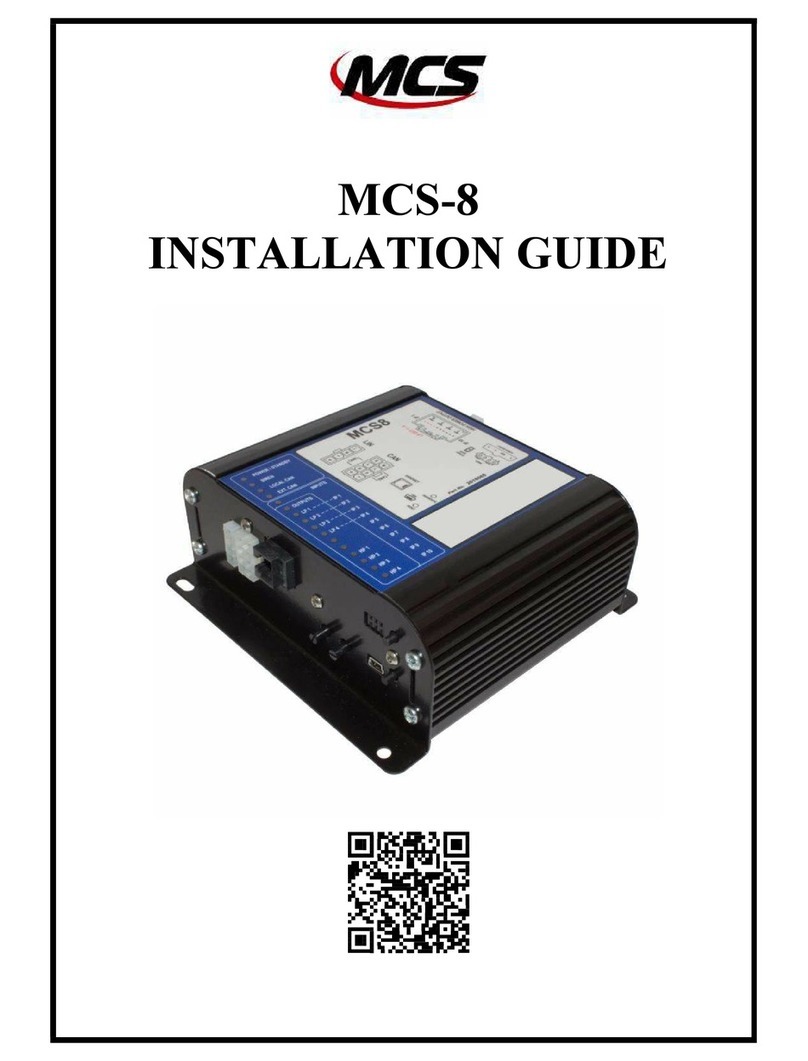
MCS
MCS MCS-8 installation guide

powersoft
powersoft DigiMod IS integration kit Technical note
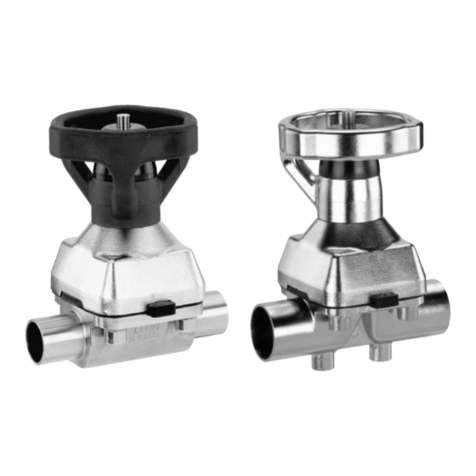
GEM
GEM 653 Installation, operating and maintenance instructions

MASCOT
MASCOT DiskFlo Installation, operation & maintenance instructions
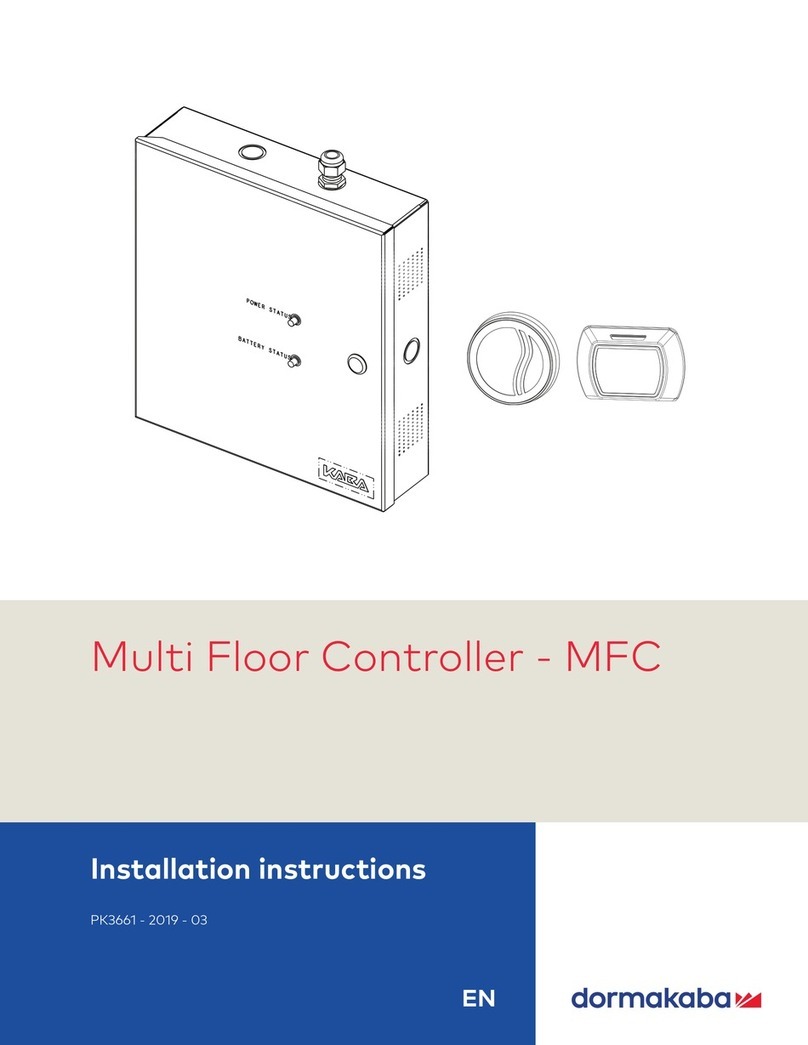
Dormakaba
Dormakaba MFC installation instructions

Powers
Powers IntelliStation Jr User guide and instruction manual
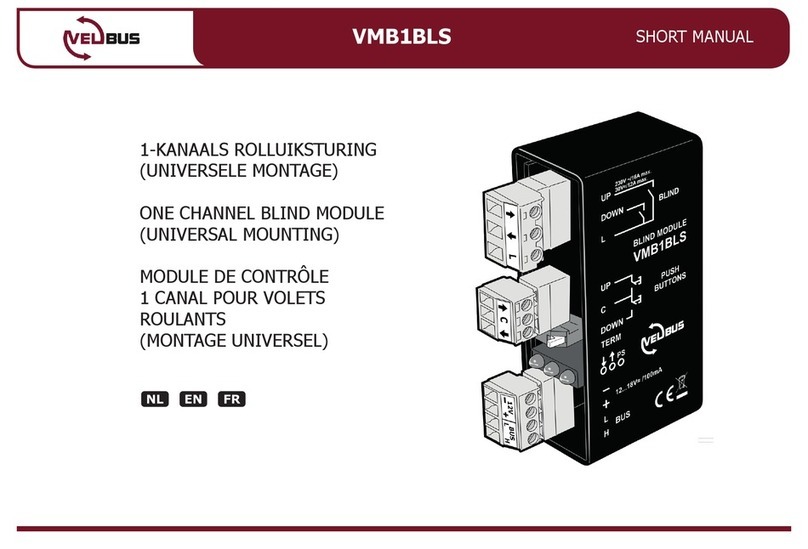
Velbus
Velbus VMB1BLS Short manual
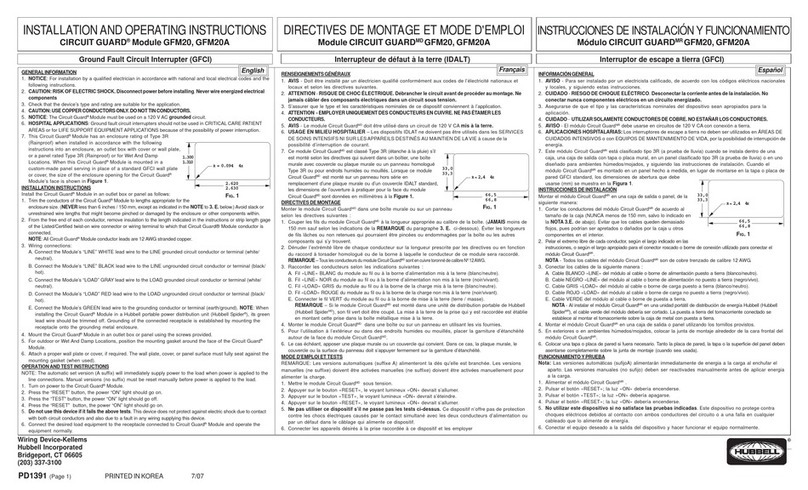
Hubbel
Hubbel CIRCUIT GUARD GFM20 Installation and operating instructions
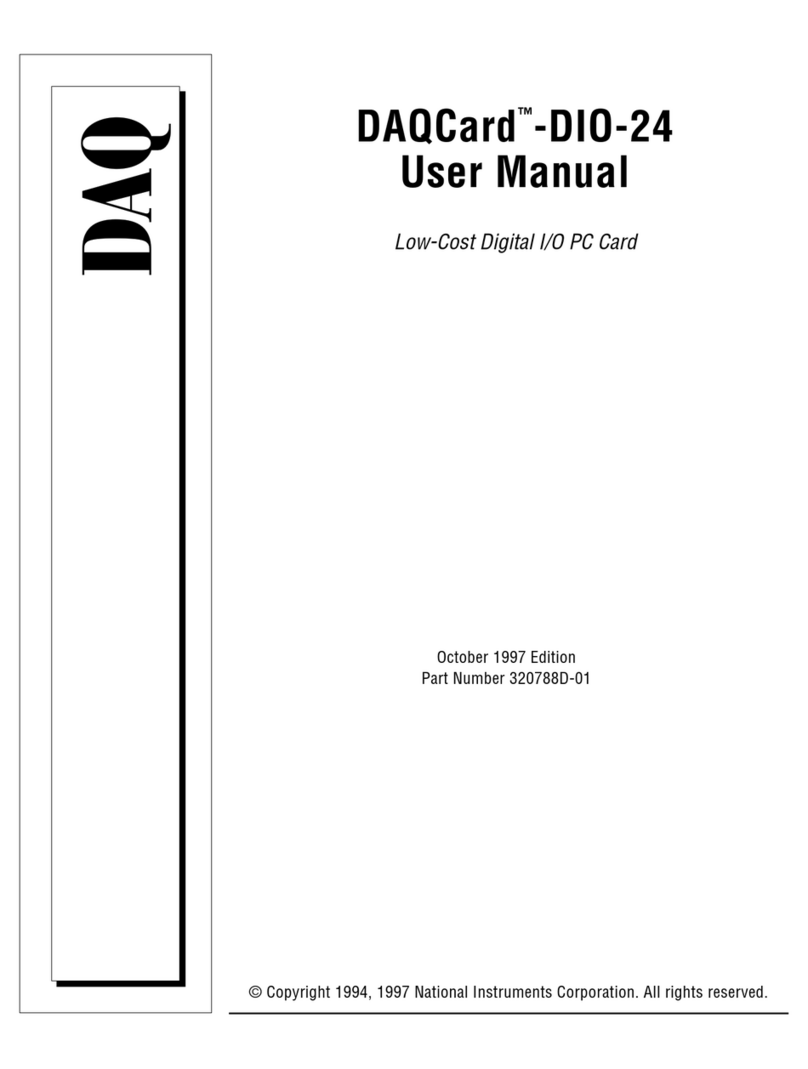
National Instruments
National Instruments DAQCard-DIO-24 user manual
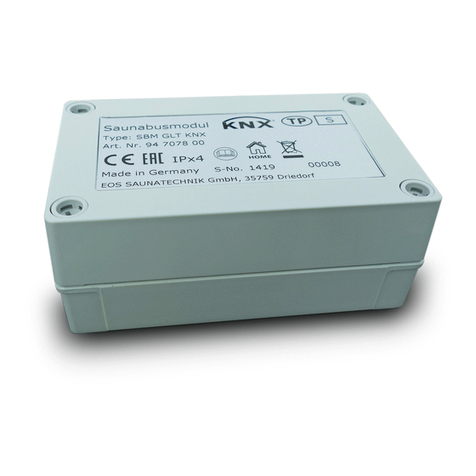
EOS
EOS SBM GLT KNX Installation and operating instructions
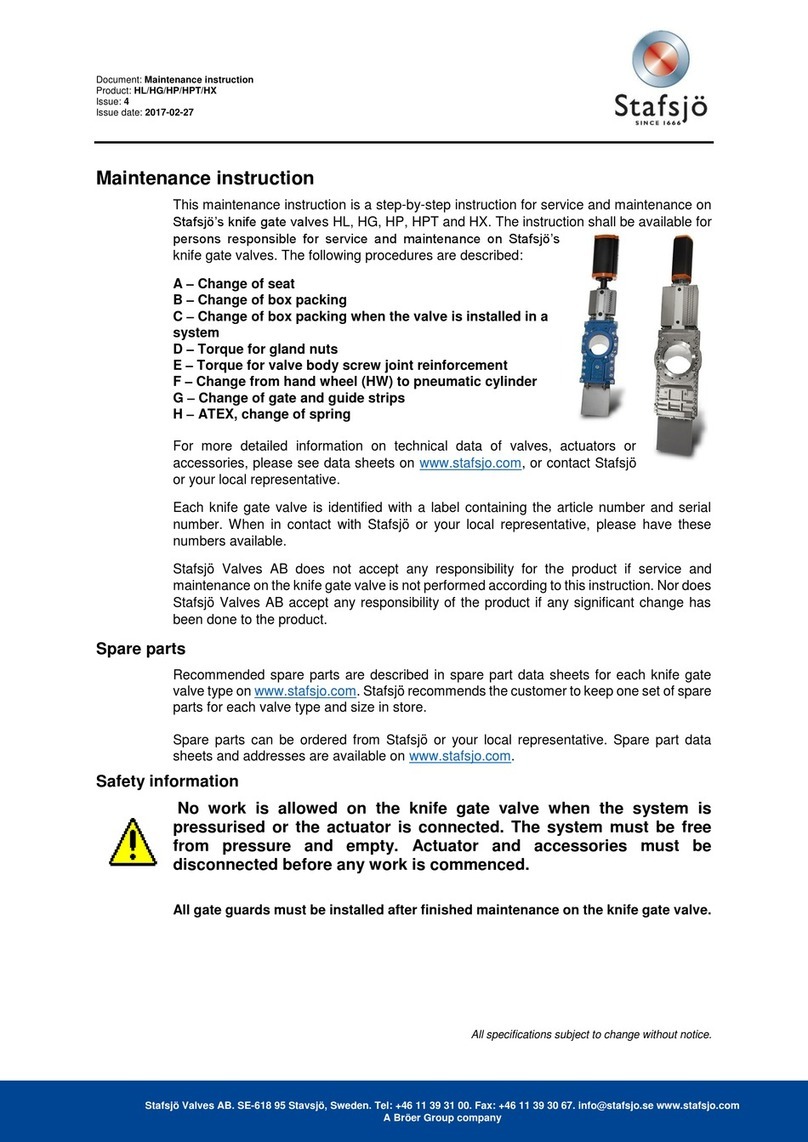
Stafsjö
Stafsjö HL Maintenance Instruction
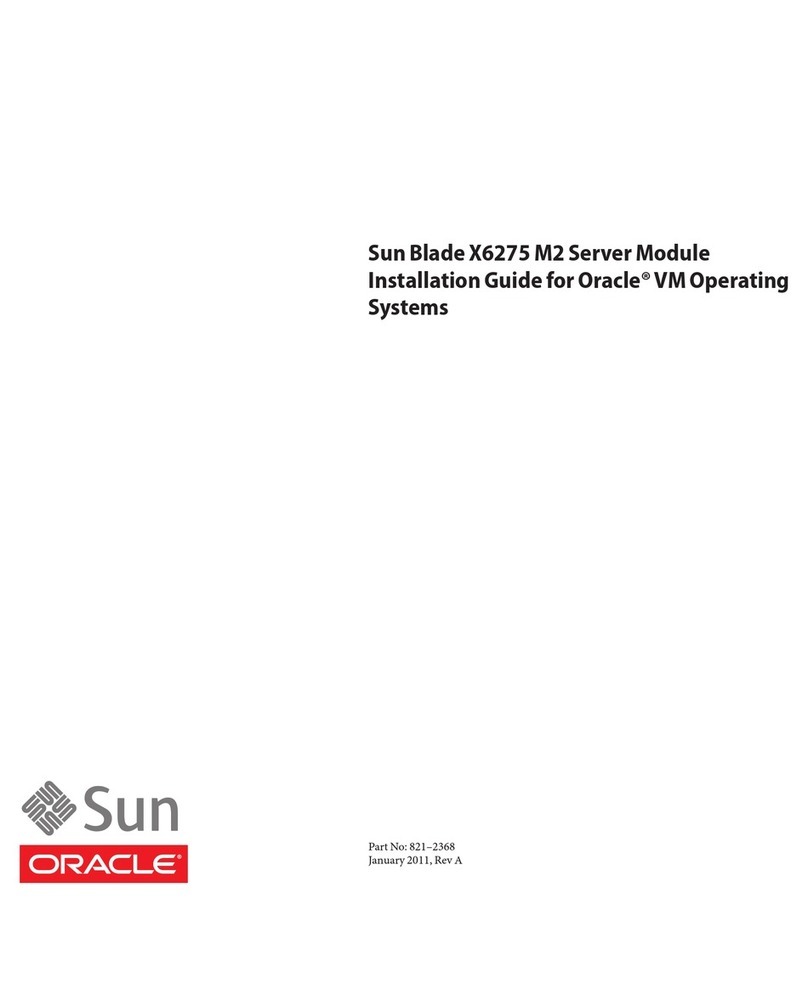
Sun Oracle
Sun Oracle Sun Blade X6275 M2 installation guide

